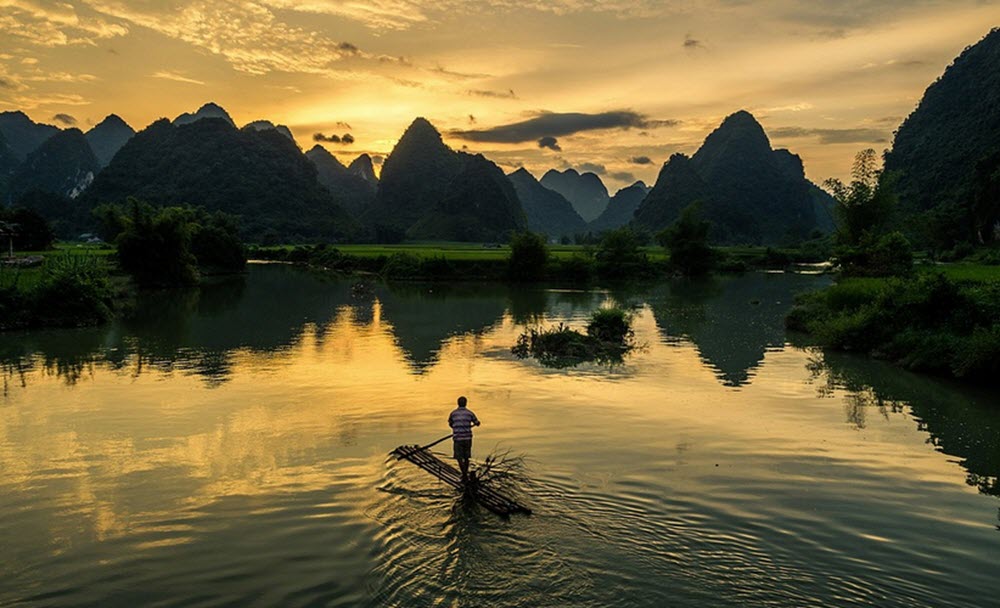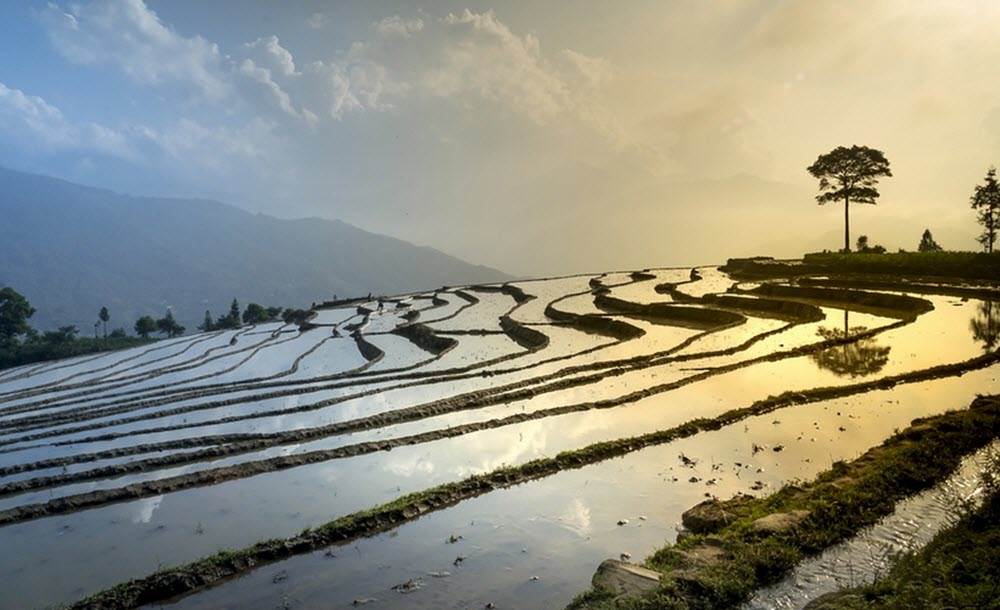The Socialist Republic of Vietnam is the easternmost country on the Indochina Peninsula in South East Asia.

After the war in 1955-1975, North and South Vietnam were unified in 1976 under a unitary socialist government. A period of political and economical isolation from many non-socialist countries followed, until 1986 when the ruling Communist Party launched a series of economic and political reforms that improved its relationships with non-socialist countries. By 2010, Vietnam had diplomatic relations with 175+ countries, and it had become much easier for tourists to visit the country.
The major religion in Vietnam is Vietnamese indigenous religion, with roughly 45% of the population belonging to this faith. It is not a highly organized religious system; it is instead a varying set of local worship tradition devoted to the than, a term that can encompass nature deities, tutelary deities, ancestral gods, “generative powers”, and more.
Roughly 25% of the population are irreligious. Examples of minority religions are Buddhism (12%), Christianity (8%), Caodaism (5%), and Dao Hoa Hao (1.5%). Caodaism is a monotheistic syncretic religion officially established in the city of Tây Ninh in southern Vietnam in 1926. Dao Hoa Hao was founded in 1939 by Huynh Phu So, a native of southern Vietnam, and is commonly seen as branch of Buddhism.
Examples of attractions
Here are just a few examples of interesting places to visit in Vietnam. The list is by no means exhaustive.
- Ba Be National Park, in northern Vietnam. Characterized by limestone mountains, tropical forest and a beautiful lake. Located about 4 hours of travel from Hanoi.
- Cuc Phuong National Park, in northern Vietnam. Home of the Muong hill tribe.
- The large Ban Gioc Waterfall, in northern Vietnam. Circa 6 hours of travel from Hanoi.
- The Dong Van Karst Plateau Geo Park, with its interesting geology and cutural heritage.
- Ha Long Bay in northern Vietnam, 170 km east of Hanoi, is renowned for its scenic ocean karst topography. This UNESCO World Heritage site is often included in lists of natural wonders of the world.
- Phong Nha-Ke Bang National Park in Quảng Bình Province features hundreds of cave systems – many of extraordinary scale and length – and astonishing underground rivers. Has been a UNESCO World Heritage since 2003, and was used as a filming location for the movie Kong: Skull Island.
- Cat Tien National Park, in southern Vietnam, circa 3 hours travel from Ho Chi Minh City. Famous for its rare primates.
- Hanoi, the capital city. Known for its interesting combination of Vietnamese elements and the remains of the French colonial epoch. Located in northern Vietnam.
- The ancient city Hue in the Central Coast region of Vietnam.
- Ho Chi Minh City (HCMC) in southern Vietnam. This is the most populous city in Vietnam, and it used to be the capital of the Republic of Vietnam (South Vietnam). Until 1975, the city was known as Saigon, and that name is still used quite frequently in informal contexts – especially when locals are talking about the most central part of HCMC.
- Nha Trang, a popular beach resort spot
- The city Phan Thiet, where you can visit the Mui Ne beach
- My Son is an UNESCO World Heritage site featuring ancient Hindu ruins.
- The island group Con Dao became a prison colony during the French colonial era. The old prison buildings are still standing and are open to the public. Today, the islands are protected as the Con Dao National Park.
- The My Lai Massacre Museum in Quang Ngai.
- The Cu Chi Tunnels in Cu Chi. There are roughly 250 km of tunnels and chambers below the city. The tunnels were dug with simple tools and bare hands during the French occupation in the 1940s, and expanded during the Vietnam War in the 1960s.
- The fire range in Cu Chi. At this range, visitors pay to fire weapons such as AK-47, M16, M60, M1 carbine, M1 Garand, jeep-mounted M30, and Russian SKS.
- Vietnam’s Demilitarized Zone (the DMZ), is the area around the former border between North and South Vietnam. Only the foundations remain of the former U.S. military bases here, as the army destroyed the bases when they evacuated.

Climate
The climate varies notably from one region to the next within Vietnam, since the topography is so varied. Unsurprisingly, the annual average temperature is higher in the lowland plains than in the highland mountainous regions.
In the southern plains around Ho Chi Minh City and the Mekong Delta, you can expect temperatures in the 20-35 degree C range. In Hanoi and the surrounding areas of the Red River Delta, temperatures are known to sometimes drop as low as 15 degrees C.
In the mountains, seasonal variations are more pronounced. During the coldest months, which are December and January, some nights will have temperatures hovering just a few degrees above the freezing point. The warmest months are July and August, where the day temperature may exceed 35 degrees C.
Generally speaking, the dry season in Vietnam lasts from November to April, and is caused by monsoon winds from the north-east that brings dry air from China. However, as the monsoon winds blow along the Chinese coast and across the Gulf of Tonkin, they do pick up quite a lot of moisture.
Flooding is not unusual during the rainy season, especially in cities with poor drainage systems.
Vietnam is subjected to tropical depressions, tropical storms and typhoons.

Short facts about Vietnam
Here are some basic facts about Vietnam that might come in handy as you plan your stay in the country.
- Area: 331,212 square kilometres
- Population: Almost 94.6 million (2016 estimate)
- Capital: Hanoi
- Most populous city: Ho Chi Minh City, formerly known as Saigon
- National language: Vietnamese
- Currency: Dong (VND)
- Time zone: UTC +07
- Driving side: Right
- Calling code: +84
- ISO 3166 code: VN
- Internet top domain: .vn